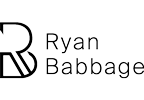What's the relevance?
Do not wonder about the relevance of blockchain and why it may be beneficial for your business and industry. Reach out and we can action a tailored assessment for your organisation or industry.
Forces of Change
Industry 4.0
A monumental shift is taking place as Industry 4.0 and the rapid advancement of technology continues to shape the market and operational dynamics of business around the world.
Industry 4.0 centres on four main design principles of interconnectivity, information transparency, technical assistance and decentralised decisions. Where decision makers may have operated with an incomplete picture in the past, Industry 4.0 will illuminate all areas of an operation, providing rich, high quality information to deliver a greater depth and completeness of information.
The most exciting fact to note is that industry 4.0 depends on ‘Big Data,’ and is heavily reliant on machine learning, enhanced automation, connected devices (IoT), artificial intelligence (AI), and Blockchain.
Digital Transformation
Digitalisation is far more than the conversion of paper records into digital data, requiring a shift in mindset towards embracing new ways of doing business, leveraging new capabilities to better serve and expand customer bases and redesigning organisational processes to drive innovation and agility.
As digitalisation transforms the way organisations work, the success of market leaders will be demonstrated through their ability to connect and collaborate with all parts of their supply chain, leveraging data, artificial intelligence and blockchain technologies to deliver services and products that span far beyond established boundaries.
Existing assumptions must be questioned and where necessary replaced, with a realisation that digitalisation is reshaping every aspect of our lives, today and for the foreseeable future. As the digital world becomes more entwined, companies will rely less on physical assets and more on intangible ones, shortening the time to global markets considerably.
Trust & Transparency
In many parts of the world, freedom of expression is now considered a basic Human Right, with the right to information, also enshrined in the Universal Declaration of Human Rights.
Like many trends of 2020 and 2021, this lack of trust is not solely attributable to the way in which governments and organisations have handled the global pandemic, rather it is the result of storm that has been brewing over the last two decades. Significant events such as the 2008 global financial crisis, increasing levels of government surveillance and a proliferation of disinformation and deceit on large digital platforms such as Google, Facebook and Twitter have all contributed to a global shortage of trust and transparency.
Blockchain is already transforming the way in which companies share product traceability information with consumers. As adoption of this technology increases, the immutable, decentralised nature of blockchain will be the passport that gives companies access to a world of engaged and loyal consumers.
Compliance & Risk
As new threats and opportunities arise, inevitably businesses change their strategies and the way they operate. 2020 is proof that yesterday’s solutions will not always meet tomorrow’s difficulties and in a data-driven world, organisations must prepare and be able to adapt to these technological disruptions.
As regulatory levers are pulled to manage growing community expectation and demonstrate that politicians are ‘listening’ to their constituents, companies will need to support their compliance efforts with digital technology and embrace every possible option that might help them compete in an ever-changing environment of regulation and compliance. Blockchain’s shared architecture, immutable ledger and inherent security may provide businesses with the opportunity to alleviate extensive manual oversight and streamline audit, compliance, and risk management activities.
Growth & Innovation
As digitalisation closes the distance once typified by oceans and borders, it brings with it an increased level of competition and intensity that can muddy once clear pools of value. In the face of growing demand and plateauing profits, many organisations are inevitably looking to expand into new, overseas markets. Whilst going global may seem to be the obvious choice, the reality is that the international economy is often unforgiving, and in the face of elevated global trade friction and uncertainty, any international expansion must carefully consider the risks and rewards.
Whilst increasing geopolitical tensions and the erosion of trust are genuine risks to international openness and innovation, the global effort to develop an effective corona-virus vaccine has also highlighted how powerful and effective international research and development efforts can be when supported by enabling regulatory policy.
Understanding the barriers to international expansion, growth and innovation will remain key areas of interest as the world recovers from the economic and social impacts of Covid-19, with external partnerships and innovation oft considered a vital component of business strategy in an internationally competitive environment.
Blockchain Decrypted
Bitcoin - The Beginnings
In the early 2000’s, the foundations for digital technology were being laid. The decade from 2000 gave us tech giants such as Facebook, Android and Twitter; the iPod & iPhone and in 2008, the release of a whitepaper titled ‘Bitcoin: A Peer-to-Peer Electronic Cash System’. Published by the enigmatic, Satoshi Nakamoto (Nakamoto, 2008), this paper, whilst only 9 pages in length, would be the start of blockchain era.
Nakamoto’s paper proposed that the current electronic payment system, whilst working well enough for most transactions, suffered from an inherent weakness due to its trust-based model. To address this weakness and the associated problems (fraud, increased costs, payment uncertainties), Nakamoto proposed a payment system built on cryptographic proof – solving the issue of how to transfer digital value without the need for a trusted third party. Thus the first Cryptocurrency was born.
What is Blockchain?
At its heart, blockchain refers to either a distributed data infrastructure or a method for recording data using crypto-analytic hash function (Wang, Han & Beynon-Davies 2019). The underpinning concept is that Blockchain is technically a database that is shared across a network of computers. At this juncture it is important to understand that Blockchain is not Bitcoin – the simplest logic being that ‘Bitcoin requires blockchain, but blockchain does not require bitcoin’.
In its simplest terms, blockchain is essentially an immutable and tamper-proof database, that is commonly decentralised in nature, making it extremely difficult to censor, change, or cheat compared to traditional systems. This is due to it often not having a single point of failure, and therefore attacking the network will subsequently require a lot of computing power (commonly known as the 51% attack).
Areas of Innovation
Security: The cryptographic security we’re using today that underpins the Bitcoin blockchain comes from 20-plus years of cryptographic research. This wasn’t just invented overnight. The way of securing data in a distributed way is cutting-edge and provides a whole new level of security collectively strengthened through the network with no single-point of failure.
Decentralisation: The art of not having a single point of failure also inherently means that the technology is censorship resistant, tamper-proof and has multiple redundancies by nature.
Historical Significance: The essence of blockchain lies in its unique structure whereby each block of data is linked to the former from inception (the genesis block), thereby creating the perfect audit trail.
Network Consensus: Due to its decentralised nature, each update to the blockchain must seek consensus from the network. Only when the majority of the network agree to an update, is it then validated and added to the chain.
Disintermediation: Blockchain smart contracts are extremely flexible and programmable, allowing for streamlined processes that can remove the “middleman” making the whole process faster and also more affordable.
Blockchain Applications
Even though the blockchain technology is yet to reach wide-spread adoption, its power and use-case has already revolutionised many industry sectors.
Some of the use-cases to consider are:
E-voting, Identity Management, Insurance, Intellectual Property, Cryptocurrencies, Supply Chain, Anonymization, Certification Management.
Advantages and Challenges
Trust & Traceability
Companies today face increasing scrutiny from governments, shareholders and consumers to be more open and transparent about their supply chains than ever before. As consumers demand to know more about everything from the treatment of workers to the origins of raw materials and ingredients, organisations must be able to understand their supply chain and clearly communicate this knowledge to both internal and external stakeholders.
Blockchain technology offers the potential to capture every stage of a supply chain and record it on an immutable distributed database. With a record of all exchanges, purchases and trades stored on the ledger, organisations can leverage the data to show the journey of every product from raw material to the consumer whilst also verifying authenticity and potentially preventing fraud and other criminal activities.
Smart Contracts
With smart contract capabilities, rules and governance can be programmatically implemented and enforced on the blockchain, in a streamlined and autonomous way.
As smart contract code is replicated in a decentralised way much like data that is stored on the blockchain, it also benefits from the security, performance and immutability that the underlying blockchain offers.
Awareness & Understanding
One of the biggest advantages of blockchain technology is coincidently also one of the biggest challenges that it needs to overcome. Trust, transparency, and traceability are some of the major benefits of blockchain, however, how would one trust and adopt blockchain technology if they do not understand how it works?
Moreover, there are many types of blockchains around, further confusing the umbrella term. A permissioned blockchain such as Hyperledger or other proprietary / private blockchains sometimes go against the distributed / public / consensus mechanisms that the term blockchain is so synonymous for.
The key challenge is to educate the mainstream about why each exist, and how to spot the different characteristics in order to bond and strengthen the authenticity in a truly decentralised, consensus-based, censorship-resistant data-set.
Regulatory Oversight
There are a number of key challenges that lie ahead of true mainstream adoption of blockchain technology. Two of the biggest hurdles to overcome are:
Regulatory policies around the “right to be forgotten”: The inherent immutable and tamper-proof nature of blockchain will pose a big challenge globally. Blockchain solutions must respect the rights of citizens and laws of various countries when it comes to the management of personal and confidential information.
Legalities Around Smart Contracts in Different Jurisdictions: When smart contracts fail to work, who is deemed liable? Numerous parties are involved in smart contracts in addition to the parties concerning the contract execution. These include the creator and custodian of the smart contract. If all parties fall under different jurisdictions (very likely), what will the legal framework look like?
Change - Divergence from the Status Quo
History has proven again and again that it is always a challenge to evolve and move forward from status quo. Humans like predictability, patterns and routines. Corporate legacy systems take a long time to phase out for this very reason.
Even though revolutionary technology such as blockchain can really improve the way things are done, we are programmed to fight against change. Additionally, adoption and understanding of blockchain is still emerging, therefore one should not underestimate the hurdles that need to be overcame in order to propel a big overhaul to success.




